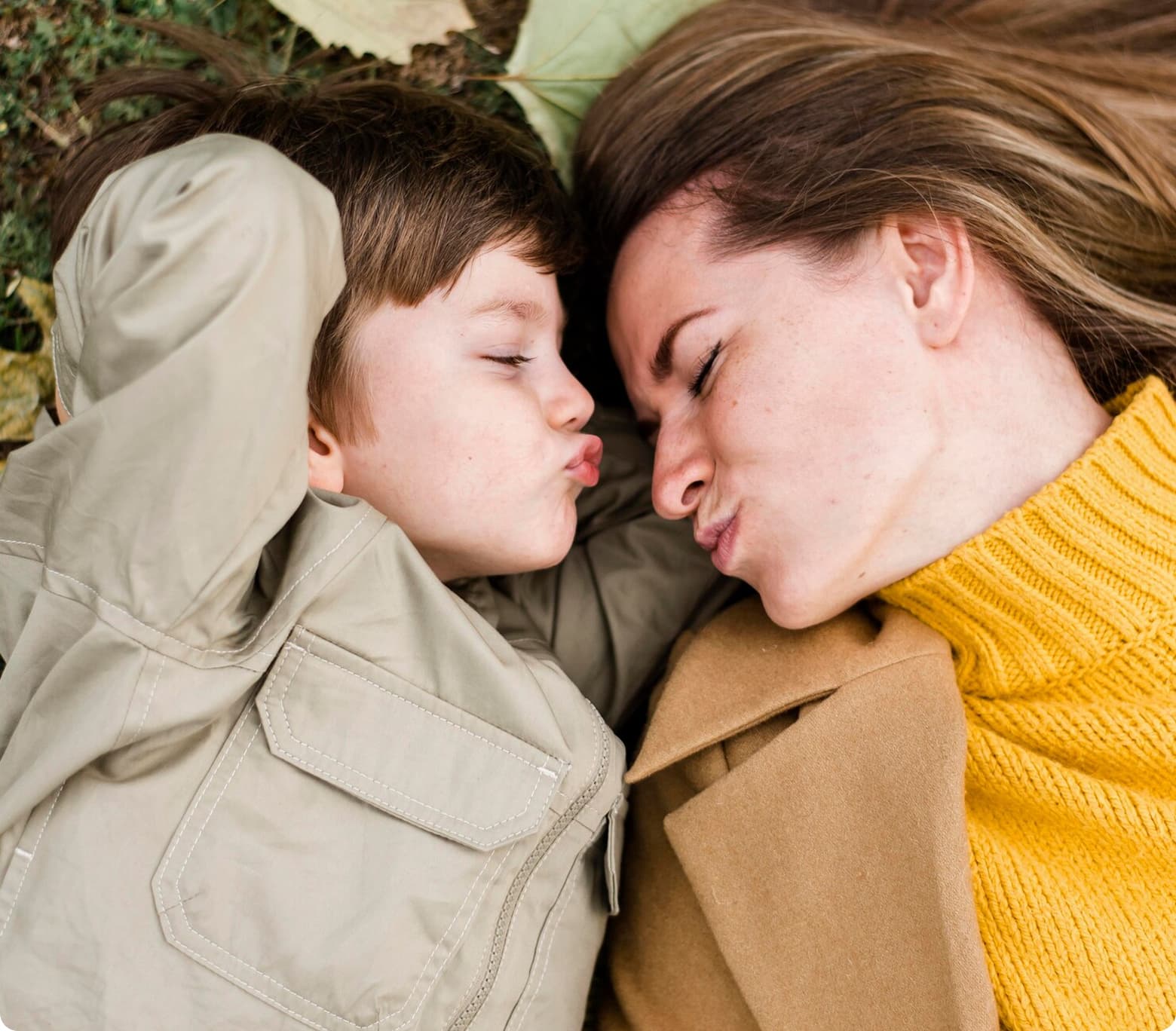Anxiety Program
You’re not the only parent who wonders why their child can’t stop worrying about everything.

When is the Anxiety Program right?
These are some of the anxious behaviors we see the most. If you’re seeing some of these (or others) at home, we can help you understand why and address them.

Worries and fears that make it difficult to concentrate
Physical symptoms like racing heart, sweating, breathing issues, tense muscles
Feeling nervous, restless, edgy, afraid, or fearful
Avoidance of things they need or want to do like conversations, homework or going to school, certain social circumstances, activities, sports, etc.
Overdoing things more than is needed (e.g. redoing homework) and/or asking repeatedly for reassurance
What to expect
Brightline’s Anxiety Program sessions can be held in person or virtually. We provide kids up to age 18 with symptom assessment, testing, diagnoses, and treatment including:

Evidence-based interventions like Cognitive Behavioral Therapy (CBT), and an emphasis on Exposure and Response Prevention (ERP), psychiatry, and medication management as needed
Support with things like separation, social, and generalized anxiety, specific phobias, panic disorder, and selective mutism
Between-session practice plans that support your child as they start using the skills they’re learning in real-life situations
Information gathering (with parent permission) from important adults in your child’s life, like teachers and other care providers, to ensure a well-rounded view of your child
A combination of agreed-upon session types (child-focused and caregiver-focused without the child) that include learning about emotions and behaviors, skill building, barrier identification, measured progress, and homework plans for continuity between sessions
Hear what Brightline parents have to say
“Working with our Brightline therapist has given my son new confidence that he can manage his anxiety through the different techniques given. He also has really benefitted from having an adult (who is not a parent) to talk through his emotions and experiences.”

Anxiety Program FAQs
It’s important to remember that every person experiences anxiety — it’s a common human emotion. It’s when the anxiety starts to affect everyday life and activities that it needs to be addressed. When anxiety becomes a problem, our expert therapists rely on cognitive behavioral therapy, with a focus on exposures. You can’t eliminate the anxiety (and again, it’s a natural, and at times a helpful, part of life). So, the important thing is for kids to learn to face their fears. Kids are taught how to identify helpful ways to manage their anxiety, and they learn not only how to live with anxiety, but how to do so much more than their anxiety tells them they’re capable of. Each plan created for kids in our anxiety program is individualized — we work closely with parents and the child (and sometimes other important adults like teachers) to design the plan for them that will work. Much of how we treat anxiety is proven effective for kids with OCD as well.
At Brightline, parents are closely involved in their child’s care. Why? Because it’s central to the way we work (and it’s a core part of the evidence-based care we rely on). This is true both for younger kids and for teenagers. Your involvement might look different depending on your child’s age, developmental ability, and program. We’ll keep the discussion of how/why/why ongoing.
For very young children, parents are a huge part of their child’s care. The parent is the one with the fully developed brain — which means you’re also the one with the hindsight, insight, and foresight to integrate what we do in our sessions into the daily life of your young child. The way we train parents empowers them to use the skills that help with all the tiny, day-to-day interventions. This is so much more effective than having a clinician work with a child one-on-one for an hour a week and then just sending them home. During parent training sessions, sometimes kids are present, sometimes not. For example, if you're here because your child is experiencing separation anxiety, we might practice independence or separating from you, the parent, as part of their treatment.
For kids in this middle age group, parents should expect to be involved in every session. In some situations, they might even be more involved than their child. For others, parents will need to check in at the beginning or the end of the sessions. And in some cases, the involvement might be more evenly split or include more shared time. The specifics have a lot to do with why you're coming to care and the care plan you co-design with your clinician.
Even with teenagers, parents should still expect to be heavily involved. If they aren’t part of every session, it’s likely they’ll be part of every other. Typically, this looks like parents checking in at the beginning or the end of the session.
When we say parents are checking in, we don’t mean that we're telling you everything your child said or did when you weren’t there. (People would stop coming to us for care!) Instead, during the check-in time with parents, we’re relying on you for updates about how things have gone over the past week. We’ll ask you what changes you see, about the current symptoms or issues, and your point of view on how skills practice has been going. We’ll also fill you in on any new goals or skills that the child is expected to practice in the upcoming week; the more you know what your child is working on, the more you can support — and not accidentally work against the plan. Lastly, these check-ins are also for you to receive the guidance you need. We know kids don’t come with instructions, so a big part of our job is to teach you the skills you need to rely on during all those hours between sessions.
As evidence-based care devotees, we champion lifelong learning and continuing education. Our training director builds learning programs based on the latest research for our team. We hold weekly team meetings and consultation groups (including one-on-one meetings with managers) during which we discuss our clinical approach. Performance evaluations and quality oversight are both closely aligned with our evidence-based practice approach. Lastly, we invest in learning! Our teams receive professional development funds to make it easier for them to keep learning.
Get in touch with us
It's okay if you don't know the root of the issue or are unsure what to say. We've been there — and now we're here for you.
